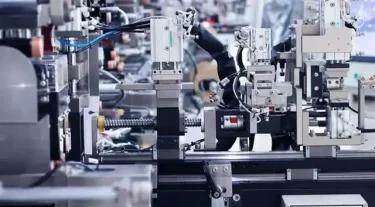
# Tape Manufacturing: Processes and Techniques
## Introduction to Tape Manufacturing
Tape manufacturing is a complex process that involves various techniques to produce adhesive tapes for different applications. From packaging to medical use, tapes play a crucial role in our daily lives. The manufacturing process requires precision and quality control to ensure the final product meets specific requirements.
## Raw Materials Used in Tape Production
The primary materials used in tape manufacturing include:
– Backing materials (paper, plastic films, cloth, or foil)
– Adhesives (rubber-based, acrylic, or silicone)
– Release liners (for pressure-sensitive tapes)
– Additives (tackifiers, stabilizers, and pigments)
## The Tape Manufacturing Process
### 1. Backing Material Preparation
The first step involves preparing the backing material, which serves as the base for the tape. This may include:
– Extruding plastic films
– Weaving or knitting fabric backings
– Treating paper backings with special coatings
### 2. Adhesive Application
There are several methods for applying adhesive to the backing material:
– Solution coating: Adhesive is dissolved in solvent and applied
– Hot melt coating: Adhesive is heated and applied in molten form
– Water-based coating: Adhesive is dispersed in water and applied
### 3. Drying and Curing
After application, the adhesive must be dried or cured:
– Solvent-based adhesives require evaporation
– Water-based adhesives need drying ovens
– Some adhesives require UV or thermal curing
### 4. Slitting and Rewinding
The large rolls of coated material are then slit into narrower widths:
– Precision slitting machines cut to exact specifications
– Finished rolls are wound onto cores
– Edge quality is carefully monitored
## Quality Control in Tape Manufacturing
Quality control is essential throughout the manufacturing process:
– Adhesion testing (peel, tack, and shear tests)
– Thickness measurement
– Tensile strength evaluation
– Visual inspection for defects
## Specialized Tape Manufacturing Techniques
### Double-Sided Tapes
Manufacturing involves:
– Applying adhesive to both sides of a carrier material
– Using release liners to protect adhesive surfaces
– Precise alignment during lamination
### Foam Tapes
Production includes:
– Using foam as the backing material
– Special adhesive formulations for better bonding
– Controlled compression during manufacturing
## Environmental Considerations
Modern tape manufacturing focuses on sustainability:
– Reducing solvent use
– Developing water-based adhesives
– Recycling production waste
– Using biodegradable materials
## Future Trends in Tape Manufacturing
The industry is evolving with:
– Smart tapes with embedded sensors
– Nanotechnology in adhesive formulations
– Improved recyclability
– Energy-efficient production methods
Tape manufacturing continues to advance, meeting the growing demands of various industries while addressing environmental concerns. The combination of traditional techniques with innovative technologies ensures the production of high-quality tapes for countless applications.
Keyword: tape manufacturing